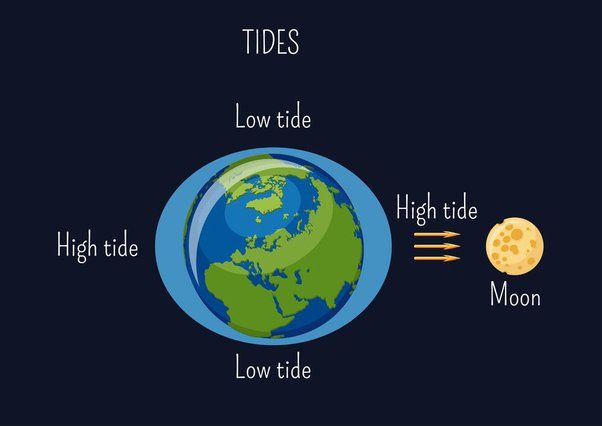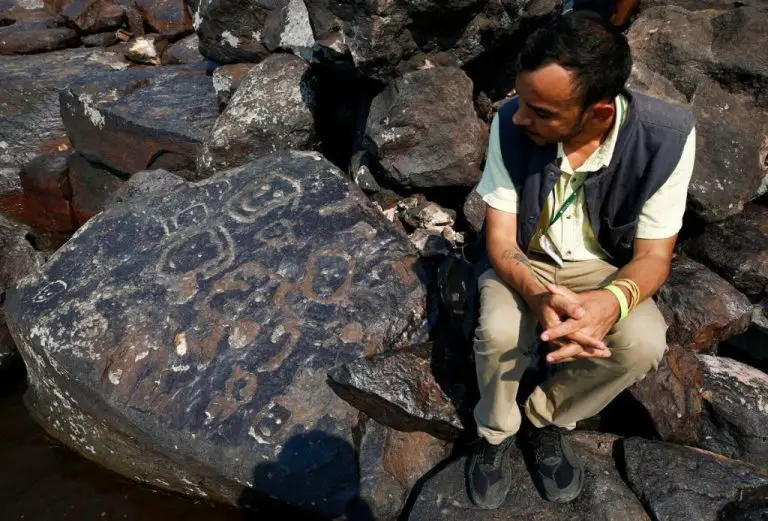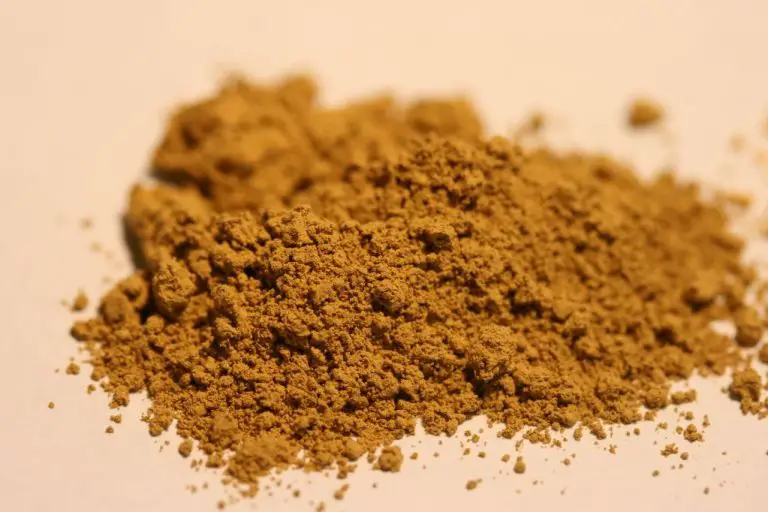Is The Ocean In Constant Motion?
Is the ocean in constant motion? This question examines the complex nature of Earth’s oceans, which cover over 70% of the planet’s surface. The ocean is not simply a large body of water but rather a dynamic system with various forces causing it to move and flow continuously. In this article, we will look at the different causes of ocean motion including tides, winds, Earth’s rotation, differences in water temperature and salinity, as well as ocean currents and waves. By exploring what sets the ocean in motion, we can better understand this vast and intricate part of our planet.
Causes of Ocean Motion
The ocean is constantly moving due to a variety of forces. Some of the main drivers of ocean currents and circulation include:
Tides
Tides are the periodic rise and fall of ocean water levels caused by the gravitational forces of the Moon and Sun acting on the Earth (1). As tides rise and fall, they cause horizontal currents as water moves back and forth. Tides are an important driver of ocean circulation, especially near shore.
Winds
Surface winds blowing across the ocean push the water in the direction the wind is moving. This wind-driven motion causes currents in the upper hundreds of meters of the ocean (2). The trade winds, westerlies, polar easterlies, and other global wind patterns drive large surface ocean currents like the Gulf Stream.
Earth’s Rotation
The Earth’s rotation also impacts ocean circulation. The Coriolis effect causes moving objects to be deflected sideways from their path. In the Northern Hemisphere, this causes currents to be deflected to the right. In the Southern Hemisphere, currents are deflected to the left. The Coriolis effect influences the direction of ocean currents.
Temperature and Salinity
Variations in water temperature and salinity cause density differences. Colder, saltier water is denser than warmer, fresher water. Denser water sinks, while less dense water rises. These density-driven circulations cause deep ocean currents and overturning circulations (2).
Tides
The gravitational forces of the moon and sun are the primary cause of ocean tides (see https://scijinks.gov/tides/). As the moon orbits the Earth, its gravitational pull generates the tidal forces that cause the rise and fall of the ocean’s surface seen as high and low tides. High tides occur when the gravitational pull causes water bulges on the side of the Earth closest to the moon and on the opposite side. Low tides occur with the water bulges are perpendicular to the moon’s gravitational pull.
The frequency of tides depends on the orbits and relative positions of the Earth, moon, and sun. Most places have two high tides and two low tides per day, called semidiurnal, caused mainly by the moon (see https://oceanservice.noaa.gov/facts/tidefrequency.html). When the gravitational forces of the sun and moon align, which happens during new and full moons, this causes higher than normal tides known as spring tides. During quarter moons, the sun and moon’s gravitational forces counteract each other causing lower tides known as neap tides.

The rise and fall of tides also creates tidal currents or flows that oscillate between high and low tide. In some places with narrow inlets or bays, the incoming and outgoing tidal currents can be quite strong. Tidal currents are one way the tides cause constant motion in the oceans.
Winds
Wind blowing over the ocean surface causes waves and currents to form (https://wtamu.edu/~cbaird/sq/2013/07/22/how-does-wind-create-all-the-ocean-currents/). The global wind patterns known as the trade winds and westerlies play a major role. The trade winds blow from the northeast in the Northern Hemisphere and the southeast in the Southern Hemisphere, causing surface currents. The westerlies blow from the southwest in the Northern Hemisphere and the northwest in the Southern Hemisphere, driving ocean gyres like the large North Atlantic gyre.
The friction between wind and water can also cause upwelling, which brings cold, nutrient-rich water from the ocean depths up to the surface. Upwelling occurs along the west coasts of continents, where winds blow parallel to the coastline. This upwelled water supports thriving marine ecosystems and productive fisheries (https://www.noaa.gov/what-causes-ocean-currents).
Earth’s Rotation
The rotation of the Earth has a major impact on ocean currents through the Coriolis effect. As the Earth rotates on its axis, circulating winds and water are deflected to the right in the Northern Hemisphere and to the left in the Southern Hemisphere (The Coriolis Effect). This deflection sets up the complex global wind patterns that drive ocean currents and is known as the Coriolis effect (Coriolis Effect).
The Coriolis effect causes ocean currents and winds to curve into circular clockwise rotations in the Northern Hemisphere and counter-clockwise in the Southern Hemisphere. These large systems of rotating ocean currents are called gyres. There are five major gyres: the North Atlantic, South Atlantic, North Pacific, South Pacific, and Indian Ocean gyres. The currents that comprise these gyres help circulate heat, nutrients, and oxygen around the world’s ocean basins.
Temperature & Salinity
Density differences due to temperature and salinity drive a global process known as the thermohaline circulation (THC). This large-scale ocean circulation consists of cold, dense waters that sink in the polar regions and flow along the ocean bottom towards the equator, while warm, less dense waters flow at the ocean’s surface from lower to higher latitudes to replace the sinking water (1,2).
THC depends on both temperature and salinity. Colder water is denser and sinks to the bottom, while warm water is less dense and rises to the surface. Additionally, saltier water is denser than fresher water, causing high salinity water to sink below low salinity water. The combination of temperature and salinity differences creates the density gradients that drive the global conveyor belt of ocean circulation.
The thermohaline circulation plays a key role in regulating climate, transporting heat, and driving deep ocean currents. This critical planetary process constantly circulates water around the globe on scales of decades to centuries. Even small changes in THC can impact climate, weather patterns, and ocean ecosystems over time.
(1) https://oceanservice.noaa.gov/education/tutorial_currents/05conveyor1.html
(2) https://en.wikipedia.org/wiki/Thermohaline_circulation
Ocean Circulation
The ocean is in constant motion largely due to ocean currents. Ocean currents are streams of water flowing in set patterns throughout the world’s oceans. Major current systems like the Gulf Stream in the Atlantic, Kuroshio Current in the Pacific, and Agulhas Current off the southeast coast of Africa help circulate water around the globe.
The motion of ocean currents is driven primarily by wind and the Earth’s rotation. As wind blows across the surface of the ocean, it pushes water along with it. The Coriolis effect from the Earth’s rotation causes currents in the Northern Hemisphere to veer right and currents in the Southern Hemisphere to veer left. This facilitates a clockwise circulation pattern in the North Pacific and North Atlantic.
In addition to wind and Earth’s rotation, differences in water temperature and salinity contribute to ocean circulation. Colder, saltier water is denser and sinks, while warmer water is less dense and rises to the surface. This process leads to upwelling and downwelling, which brings nutrient-rich water to the ocean’s surface while sending oxygen-depleted water into the depths.
Major current systems like the Gulf Stream help moderate global climate by transporting warm water from the tropics toward the poles. The currents release heat into the atmosphere, warming nearby landmasses. Upwelling regions along western coasts bring cooler, nutrient-rich water to the surface which helps stimulate biological productivity. Overall, ocean circulation plays a key role in regulating planetary climate and heat transport.
Waves
Waves are one of the most noticeable motions in the ocean. They are primarily caused by wind blowing across the ocean surface. As wind transfers its energy to the water, waves begin to form. There are different types of wind-driven waves:
Swell waves are long waves that have traveled away from where they were generated by wind. These waves can travel thousands of miles across open ocean. Source
Capillary waves are very small, rippled waves caused by the surface tension of water. They are significantly influenced by wind strength and water viscosity.
Tsunamis are long waves caused by sudden displacement of ocean water through events like underwater earthquakes, landslides, or volcanic eruptions. Tsunamis can travel at speeds over 500 mph in open ocean. Source
As waves travel, they transport energy. Understanding wave energy has allowed humans to harness it for renewable electricity through wave energy converters.
Impact on Climate
Ocean currents play a significant role in the transfer of heat around the planet and can impact regional and global climate patterns. According to the NOAA, the ocean stores solar radiation and distributes heat and moisture around the globe by the movement of currents (NOAA).
Warm ocean currents, like the Gulf Stream in the Atlantic, transport warm water from the equator toward the poles. This transfers heat and impacts the climate of places like Europe, which is warmer than it would be otherwise. Cold currents like the California current transport colder water from the poles towards the equator, cooling nearby coastal areas (NOAA Ocean Explorer).
Variations in ocean currents like El Niño in the Pacific can also lead to shifts in global weather patterns by changing where heat is distributed. During an El Niño, weaker coastal currents cause warm water to spread east across the Pacific, bringing heavy rains to some areas and droughts to others (National Geographic).
Conclusion
In conclusion, the ocean is in constant motion due to various factors including tides, winds, Earth’s rotation, and differences in temperature and salinity. Ocean currents continuously circulate water around the globe, transporting heat, nutrients, and other important substances. This constant circulation is critical for regulating global climate and weather patterns. The gravitational pull of the moon drives tidal currents, while wind blowing across the surface generates wind-driven currents. The Coriolis effect from Earth’s rotation also impacts circulation. Variations in water density caused by temperature and salinity gradients further drive global conveyor belt circulation. Together, these factors generate a complex, interconnected system of surface and deepwater currents. The ocean is far from static; it is a dynamic, circulating body of water that profoundly shapes climate, weather, and life on Earth.





